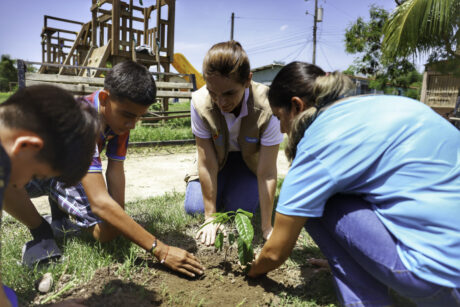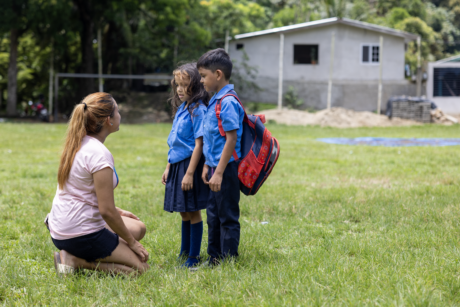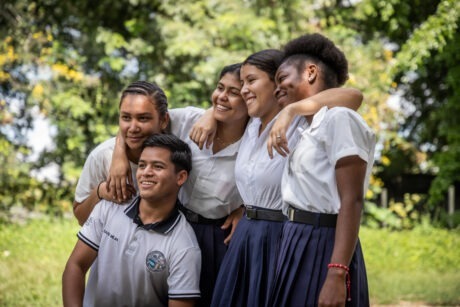The use of a “gender lens” in international development programming has brought progress in understanding and addressing inequities, particularly with regard to women’s empowerment and the prevention of gender-based violence.
However, gender represents just one aspect of a complex web of social disparities and power dynamics, and a gender-only focus falls short in addressing the diverse factors that shape vulnerability. To promote equity and inclusion effectively, recognizing the full spectrum of marginalization is crucial.
A new intersectional analysis conducted by USAID’s Sembrando Esperanza activity in Honduras underscores the need for a more nuanced approach to understanding vulnerability and risk. By examining the interplay of more than 20 identity factors of at-risk Hondurans in relation to crime, violence and irregular migration, the analysis provides a comprehensive understanding of the factors that shape vulnerability.
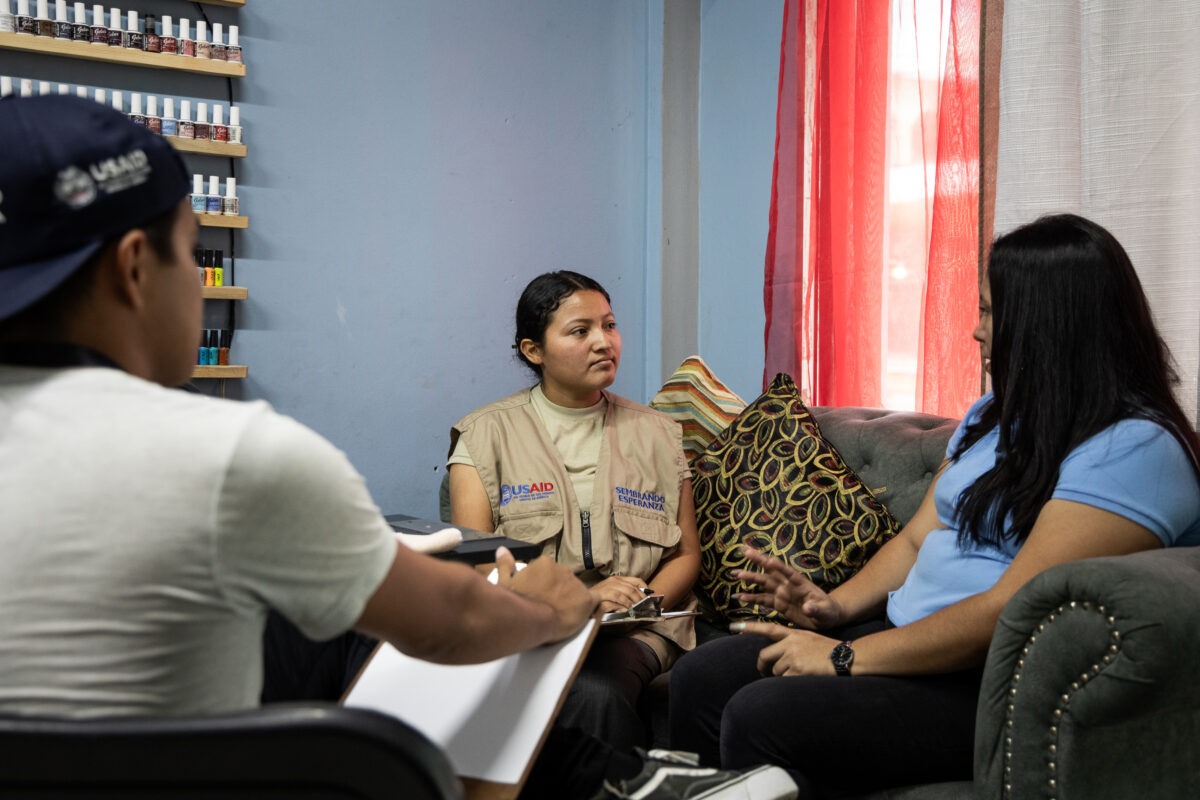
When I spoke with Sembrando Esperanza Knowledge Management Specialist Gustavo Bardales, he emphasized that the gender lens was only one aspect of how the program looked at the study.
“The new intersectionality approach used in Sembrando Esperanza goes beyond distinguishing identities by gender factors,” Bardales says. “It takes into account all social characteristics for both women and men, and especially for youth, that make up and represent a large percentage of the population of the country, and their increasing vulnerability to violence and irregular migration. This approach allows for the design of better strategies based on human security with a localization approach.
Intersectionality analyzes how overlapping social identities — such as race, ethnicity, class, age, disability and sexual orientation, among other factors — interact to shape individual and collective exposure to risk. This framework enables a deeper understanding of how identities interact within systems of power and oppression, offering insights into the diverse needs of individuals and communities alike. Employing an intersectional approach in international development programming enables interventions to be more precisely tailored to address the unique challenges faced by different groups.
Launched in August 2022 with a focus on Honduras, Sembrando Esperanza applies a systems-strengthening methodology to reduce violence and irregular migration. The $37.8 million, seven-year initiative focuses on enhancing the human security response of local prevention systems, engaging local actors across 25 municipalities. The USAID-supported program aims to equip communities, local governments and service providers with the tools necessary for sustainable development, considering factors such as economic, political, environmental, health and security dynamics, with the goal of reducing irregular migration.
Under the program’s objective to expand comprehensive family and youth-centered services, Sembrando Esperanza prioritizes interventions designed to prevent violence and irregular migration, with a focus on at-risk youth. Understanding the specific risks youth face based on their social identities is essential to better tailor interventions to the specific needs and challenges faced by different populations.
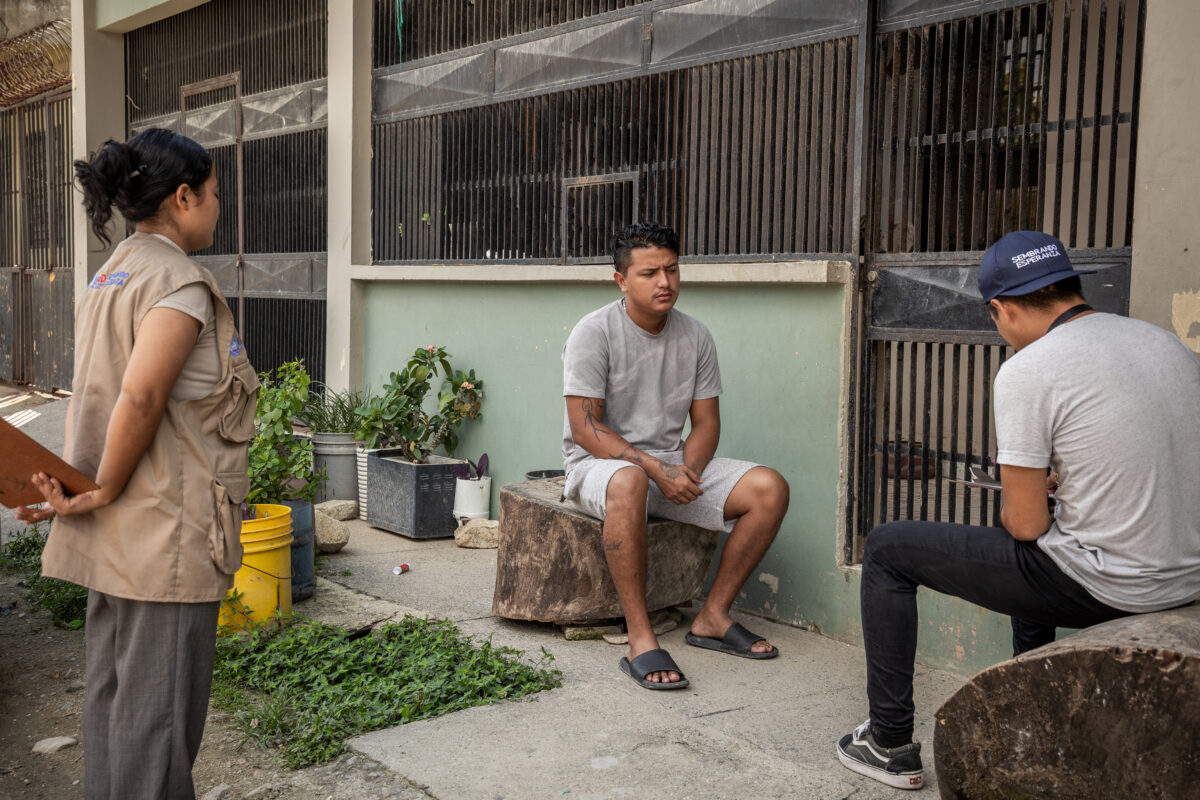
To support this targeted approach, Sembrando Esperanza partnered with U.S.-based Bixal from August 2023 to January 2024 to conduct the target population analysis. Using a participatory approach (including key informant interviews, focus groups and a review of secondary literature) the study examined how various social identities intersect in Sembrando Esperanza’s target municipalities, providing a deeper understanding of the unique vulnerabilities faced by different groups.
Insights on identity and rootedness
As the first intersectionality analysis by a USAID program in Honduras, the findings have significantly influenced the program’s ability to target violence prevention interventions towards youth and other populations most at risk, identifying key identity factors linked to crime, violence and irregular migration.
One key discovery was understanding how and why young people feel rooted in their communities based on their intersecting identities and experiences. The analysis showed that young people’s sense of belonging is more strongly based at the community, or neighborhood level, rather than the national level, and influenced more by neighborhood ties than other identity factors such as ethnicity. This connection highlights the importance of designing interventions that strengthen community ties and cultural heritage at the local level, ensuring that efforts resonate with young people’s lived experiences.
Profiles at highest risk
In addition to identifying broad identity categories that contribute to heightened marginalization in Honduras, the intersectionality analysis developed five key profiles of individuals with compounding identities that place them at the highest risk for experiencing violence and irregular migration:
- Male youth aged 11 to 18 who have dropped out of school. These young men, who often lack formal employment, are vulnerable to gang recruitment, trafficking networks and lack of access to social services.
- Young, single mothers who are internally displaced. Young mothers face a high risk of being victims of violence, gender-based violence and forced sex work, especially if they live in marginalized urban neighborhoods, have low-income jobs, are disabled or belong to the LGBTQI+ community.
- Social Activists. This includes those working on LGBTQI+, Indigenous, environmental and democracy advocacy. Social activists face a high risk of becoming targets of violence, harassment, intimidation, and even homicide, especially if they reside in rural areas or belong to racialized communities.
- Single men aged 20 to 29, without children, who are internally displaced. These men face a high risk of irregular migration, especially if they have been victims of violence and lack job skills, and are highly vulnerable to experiencing psychological distress, trauma, isolation and loss of identity and purpose.
- Young women without children who have dropped out of school and work in low-paid jobs or are unemployed. Women in this category, who have left formal education and are working in low-skilled and low-paid work, or in informal labor, are at a high risk of gender-based violence, trafficking and forced marriage, and may consider migration to escape their situation.
Impact on Sembrando Esperanza’s interventions
The insights from the intersectional analysis have been instrumental in refining Sembrando Esperanza’s approach and interventions.
With a clearer understanding of high-risk profiles, the program has been able to tailor its support to more effectively reach vulnerable youth, including through family counseling interventions designed to improve their support networks.
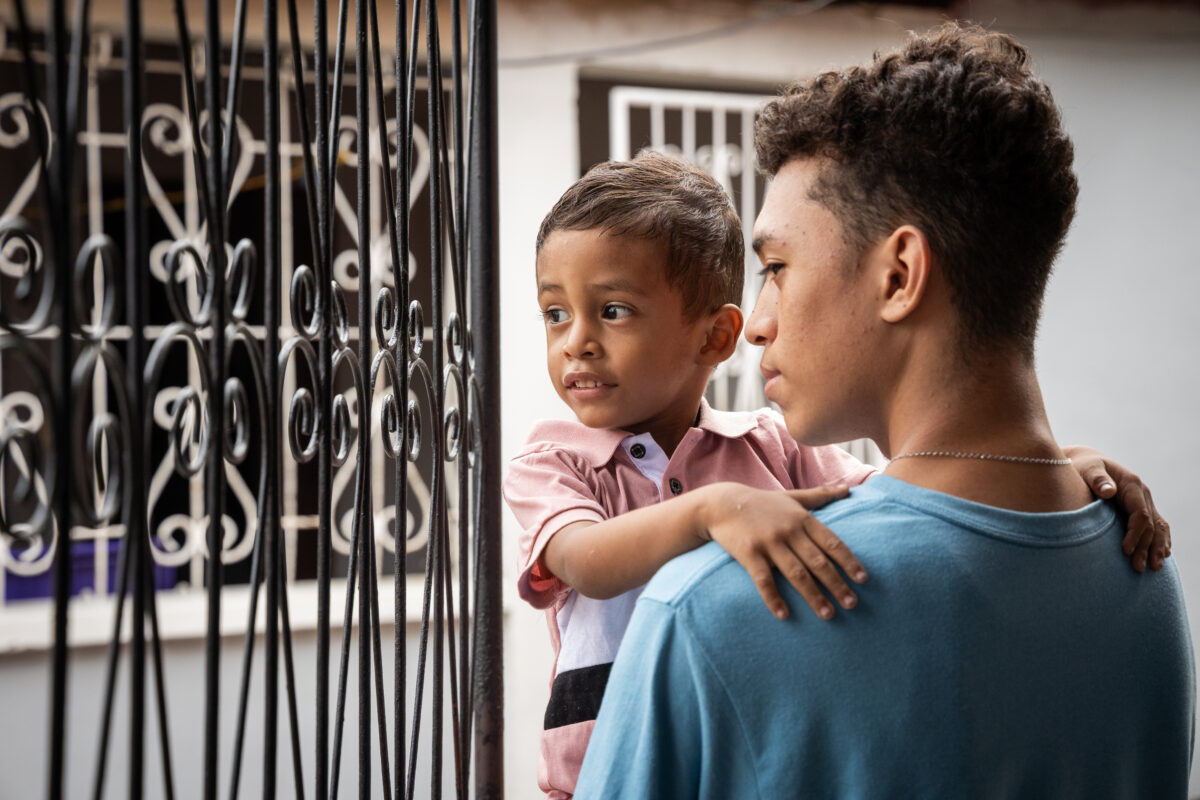
As of June 2024, the program and its partners have begun family counseling for more than 1,100 families with high-risk youth. Additionally, Sembrando Esperanza is working closely with municipal governments and community leaders to understand the specific needs and identities of their constituencies, with the aim of improving their ability to provide responsive localized services.
Sembrando Esperanza’s interventions also prioritize community cohesion, activism and rootedness at the neighborhood level. One notable example is Sembrando Esperanza’s collaboration with the Vamos Al Parque Foundation and the government to build a playground and park in the Suyapa neighborhood of Tegucigalpa. Inaugurated in May 2024, the park provides a safe space for children and families, fostering family bonds and child development in a secure and supportive environment.
Recommendations and next steps
The intersectional report offers a series of policy recommendations for Sembrando Esperanza, municipal and national governments, local civil society organizations and international donors. Sembrando Esperanza is actively disseminating these findings to local stakeholders, development implementers, and the government of Honduras, providing valuable guidance on supporting vulnerable populations to reduce violence and irregular migration.
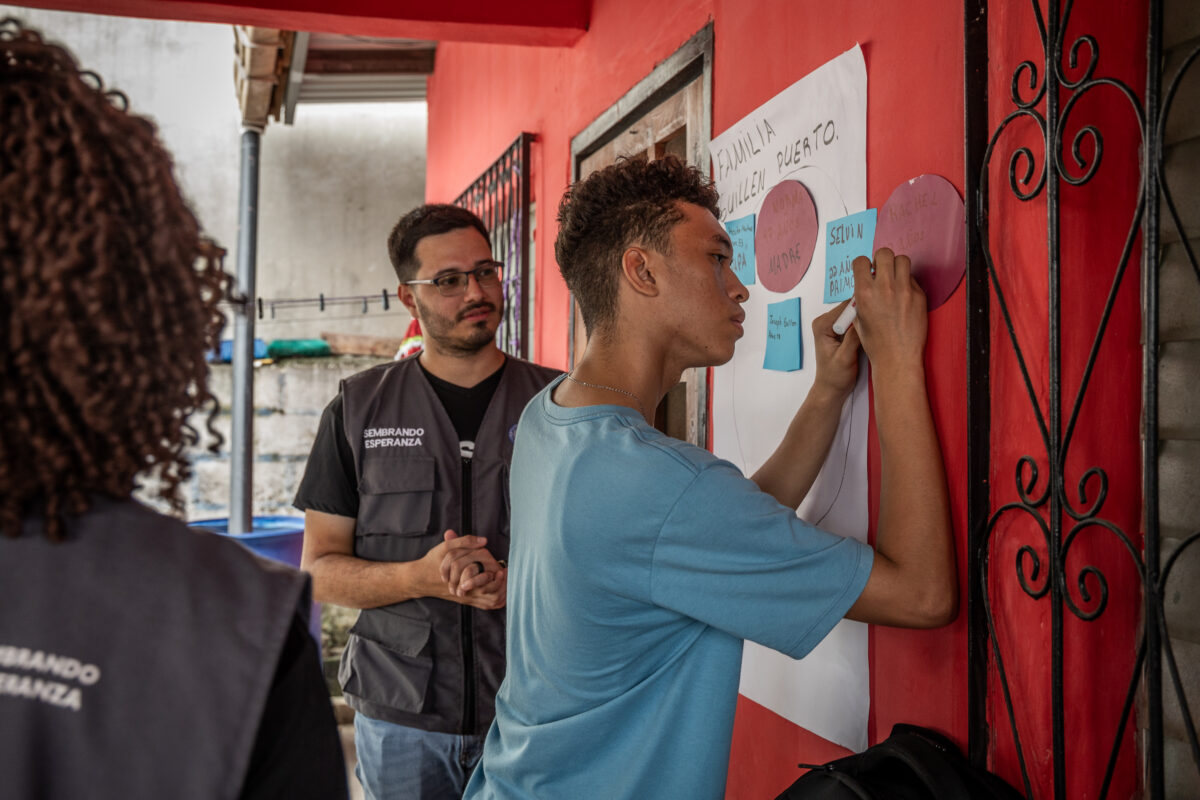
By integrating intersectionality into its Gender Equality and Social Inclusion mainstreaming efforts, Sembrando Esperanza has laid a strong foundation for more effective and equitable interventions grounded in nuanced, in-depth data that captures the complexities of social identity and marginalization in the local context.
The findings from this analysis are shaping targeted, culturally sensitive programs that address the unique challenges faced by at-risk groups. Through ongoing collaboration and a commitment to intersectional approaches, Sembrando Esperanza aims to continue fostering resilience, reducing vulnerabilities, and creating pathways toward a brighter, safer future for the communities it serves.
Kate Cheatham is an Associate Program Manager with Creative Associates International. She earned a Master’s degree in Gender Analysis and Humanitarian Studies from the Fletcher School at Tufts University in May 2021.
